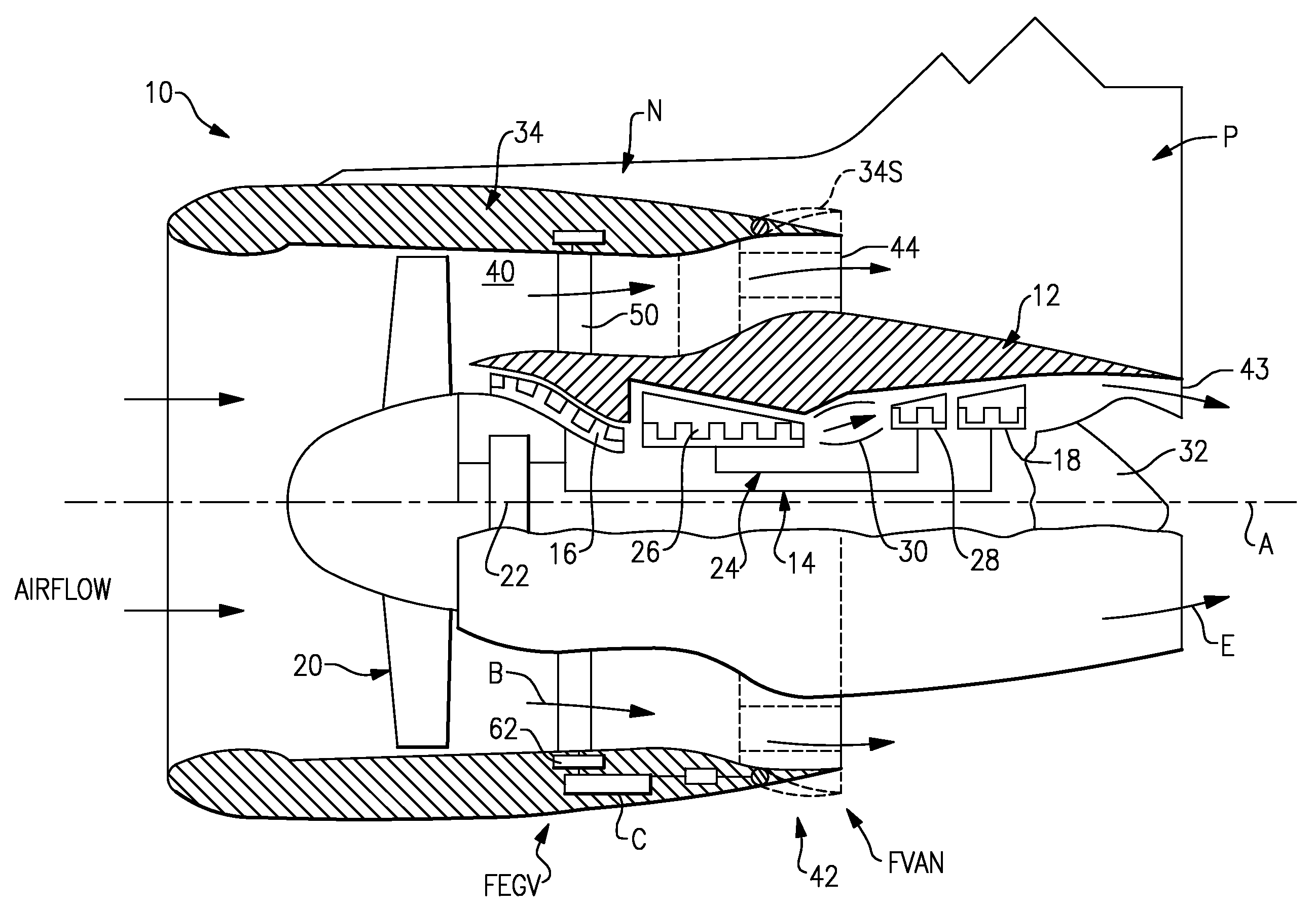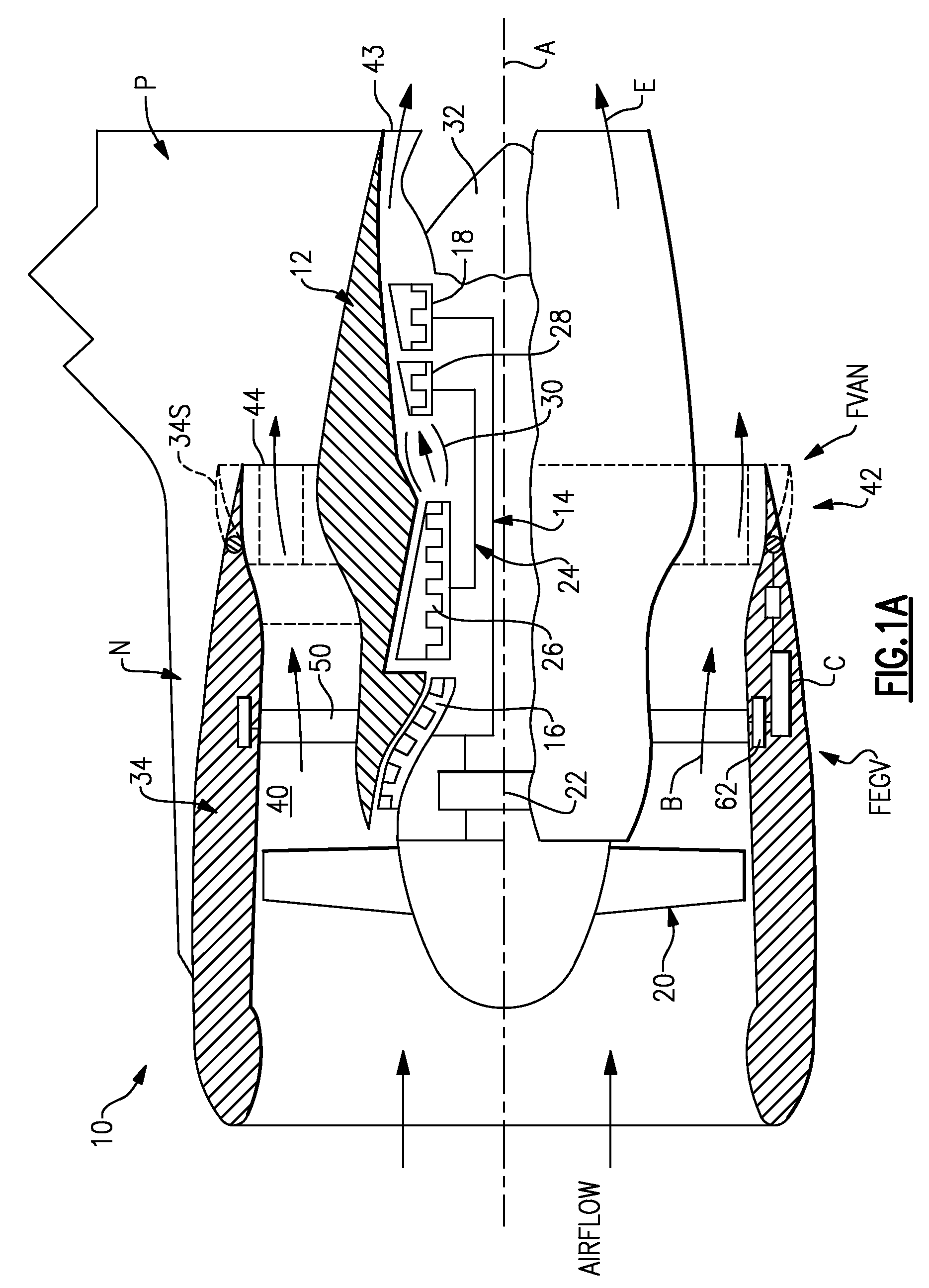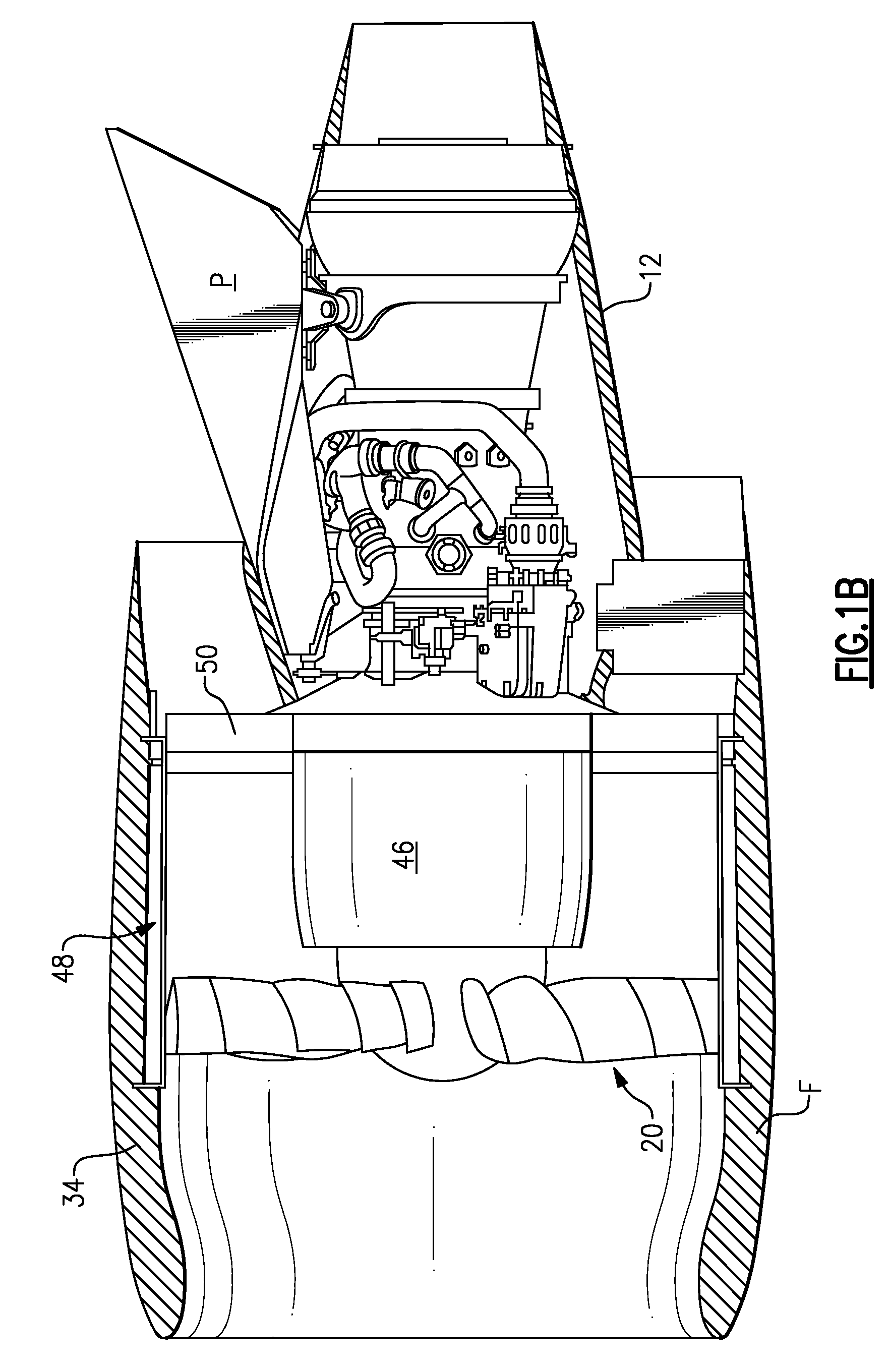Gas turbine engine with variable geometry fan exit guide vane system
a technology of variable geometry and exhaust guide, which is applied in the direction of liquid fuel engines, machines/engines, combination engines, etc., can solve the problems of less than optimal drag, large fan nacelle diameter, and significant flow spillage, so as to reduce the requirement of thrust reverser, reduce the requirement of engine weight and packaging, and reduce the requirement of fan bypass flow
- Summary
- Abstract
- Description
- Claims
- Application Information
AI Technical Summary
Benefits of technology
Problems solved by technology
Method used
Image
Examples
Embodiment Construction
[0019]FIG. 1 illustrates a general partial fragmentary schematic view of a gas turbofan engine 10 suspended from an engine pylon P within an engine nacelle assembly N as is typical of an aircraft designed for subsonic operation.
[0020]The turbofan engine 10 includes a core section within a core nacelle 12 that houses a low spool 14 and high spool 24. The low spool 14 includes a low pressure compressor 16 and low pressure turbine 18. The low spool 14 drives a fan section 20 directly or through a gear train 22. The high spool 24 includes a high pressure compressor 26 and high pressure turbine 28. A combustor 30 is arranged between the high pressure compressor 26 and high pressure turbine 28. The low and high spools 14, 24 rotate about an engine axis of rotation A.
[0021]The engine 10 in the disclosed embodiment is a high-bypass geared turbofan aircraft engine in which the engine 10 bypass ratio is greater than ten (10), the turbofan diameter is significantly larger than that of the low ...
PUM
 Login to View More
Login to View More Abstract
Description
Claims
Application Information
 Login to View More
Login to View More - R&D
- Intellectual Property
- Life Sciences
- Materials
- Tech Scout
- Unparalleled Data Quality
- Higher Quality Content
- 60% Fewer Hallucinations
Browse by: Latest US Patents, China's latest patents, Technical Efficacy Thesaurus, Application Domain, Technology Topic, Popular Technical Reports.
© 2025 PatSnap. All rights reserved.Legal|Privacy policy|Modern Slavery Act Transparency Statement|Sitemap|About US| Contact US: help@patsnap.com



